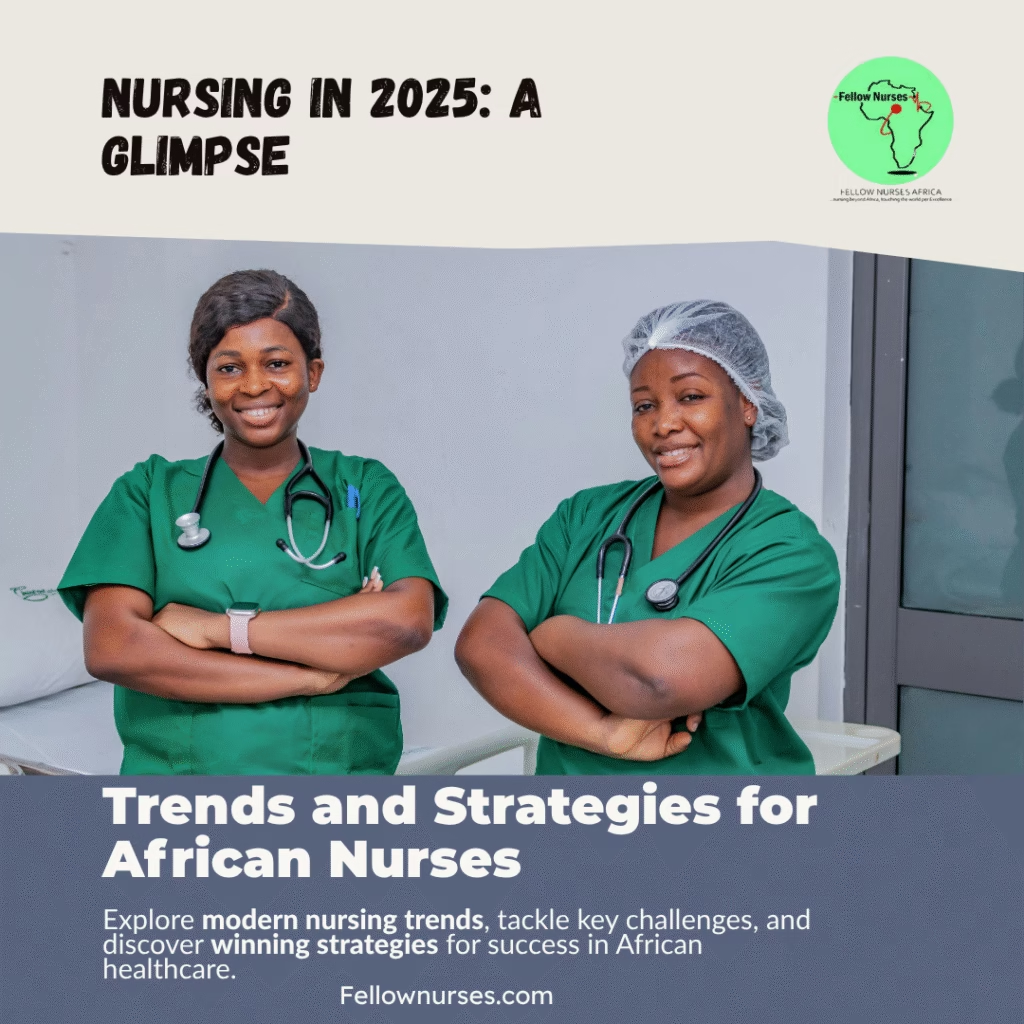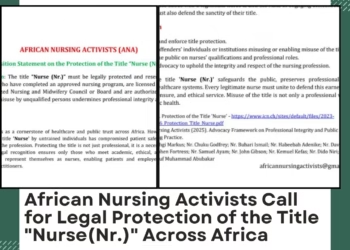Nursing in 2025: Trends, Challenges, and Winning Strategies for African Nurses
Fellow Nurses Africa || Lagos, Nigeria || June 07, 2025.
As the world pivots through a new era of healthcare evolution, one thing is clear: nurses remain at the heart of resilient, inclusive, and responsive health systems. The World Health Organization’s State of the World’s Nursing 2025 report paints a vivid picture of what lies ahead — and more importantly, what African nurses must do to stay ahead.

From digital disruption to leadership gaps, from workforce shortages to climate emergencies, the challenges are real. But so are the opportunities — if we act smart, fast, and together.
Here’s your in-depth guide to the emerging trends in global nursing and the practical strategies African nurses, educators, and policymakers can use to lead the way.
1. Global Nursing Trends: What’s Changing in 2025?
Nursing Shortages Persist — and Hit Africa Hardest
The world needs nurses — urgently. There’s a global shortage of 5.8 million nurses, expected to fall only slightly to 4.1 million by 2030. But Africa and the Eastern Mediterranean will bear nearly 70% of this shortage.
In Africa, nurse-to-population ratios remain alarmingly low. Many communities don’t have even 10 nurses per 10,000 people, leaving millions without access to maternal care, chronic disease management, or emergency support.
Unequal Distribution and Nurse Migration
High-income countries host 46% of the world’s nurses — yet they represent just 17% of the global population. Their secret? They’re attracting foreign-trained nurses, often from Africa, through better pay, safer working conditions, and career growth.
This trend is draining talent from countries already struggling to meet healthcare needs. It’s time to shift the narrative from “brain drain” to “brain gain” — and we’ll show you how.
Education Gaps and Faculty Shortages
Though bachelor’s degrees are becoming the global standard, many African countries lack the infrastructure, clinical sites, and qualified educators to scale up training. Some graduates even find that extra education doesn’t translate to better pay or job roles.
2. Smart Strategies for African Nurses and Policymakers: How to Stay Ahead
A. Boost Local Education Capacity and Quality
Strategy: Invest in nursing schools, faculty, and blended learning.
- Scale up faculty development with better pay, mentorship, and digital skills.
- Use blended learning and online simulation labs to overcome clinical site shortages.
- Ensure curricula align with local health needs — from maternal health to community-based care.
Did you know? Many African countries already have the right graduate-to-stock ratio (8–12%). With better infrastructure and support, we can lead the charge in training the next generation of nurses.
B. Improve Retention and Working Conditions
Strategy: Make staying as rewarding as leaving.
- Advocate for fair wages, decent work hours, and safe staffing ratios.
- Push for mental health support, especially post-COVID burnout.
- Promote gender equity — nurses are 85% female, yet a 7% global pay gap remains.
“When nurses are respected, protected and paid, they stay — and their patients thrive.”
C. Embrace Advanced Practice Nursing (APN)
Strategy: Empower nurses to lead, not just follow.
- Standardize and recognize APN roles (nurse practitioners, nurse anesthetists, etc.).
- Expand scopes of practice, especially in rural and hard-to-reach areas.
- Create policy and legal frameworks to allow nurses to prescribe, diagnose, and manage care.
APNs can dramatically improve access to care in under-served regions — without waiting for doctors.
D. Go Digital and Go Green
Strategy: Prepare nurses for the tech and climate frontlines.
- Integrate digital literacy and AI training into nursing education.
- Equip nurses to use e-health tools, telemedicine, and data platforms.
- Train nurses on climate-resilient health practices and emergency preparedness.
“Nurses are key players in climate-sensitive care, from infectious disease response to disaster relief“.
E. Build Strong Nursing Leadership
Strategy: Nurses must shape policy — not just deliver it.
- Every country should have a Government Chief Nursing Officer (GCNO) with real authority.
- Leadership development programs should start early — even in training schools.
- Nurses should sit at the table in health planning, budgeting, and emergency response.
“Only 25% of low-income countries offer formal leadership programs for nurses. It’s time to change that.“
Voices from the Field
“I see so many young, brilliant nurses leave for Canada or the UK. We must create the conditions for them to want to stay,” says Rosemary Mwangi, a nurse educator in Kenya.
“Digital health saved lives during COVID. Now we need to institutionalize it — and train nurses to lead it,” adds Dr. Yusuph Banda, Malawi’s health systems strategist.
Final Word: African Nurses, Our Time Is Now
The next five years are crucial. The choices African countries make today will shape our nursing future for generations. From Lagos to Lusaka, Nairobi to Niamey, it’s time for nurses to step into leadership, technology, education, and innovation.
Let’s not just survive the trends — let’s lead them.
Fellow Nurses Africa is the independent voice of African nursing. We educate, inform, and support the nursing profession










We would not only survive the trends, we lead them. African nurses set the pace; out time is now!!!
Thank you for this.